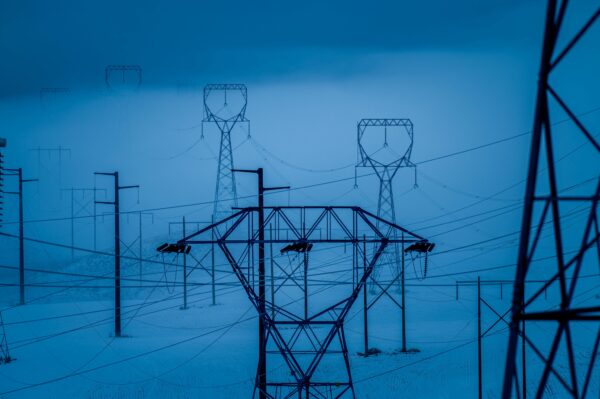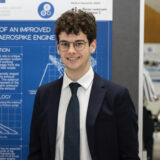Dieser Text ist im Rahmen des Reatch Ideenwettbewerbs 2023 entstanden. 2023 war ein besonderes Jahr für die Schweiz: Wir feierten 175 Jahre Bundesverfassung und damit 175 Jahre Schweizer Bundesstaat. Das nahmen wir zum Anlass, um nach Ideen für die Zukunft der Schweiz zu suchen. Welche Weichen müssen wir heute stellen, damit im Jahr 2198 die Menschen mit dem gleichen Stolz auf 2023 zurückblicken, wie wir heute auf die Entwicklungen seit 1848? Eine Auswahl der eingereichten Ideen wird auf www.reatch.ch veröffentlicht.
Nuclear energy is a method of generating electricity through the use of nuclear fission, a process in which radioactive elements like uranium decay and thereby release energy, which is then harnessed into electrical power. Over the decades, this process has been refined to the point where nuclear power has become incredibly efficient and productive, which is why I argue that this technology should be promoted rather than shunned.
One of the greatest challenges that Switzerland (along with the entire international community) will have to face in order to thrive in the next 175 years is undoubtedly climate change, more specifically the ability to satisfy a growing energy demand with clean power production. The Confederation is already working to transition most of its energy production to renewable sources, with most of Switzerland’s domestically produced electricity coming from hydropower plants. However, during the winter, we are mostly reliant on imports, with 70% of our electricity being imported.
In order to become completely carbon neutral and simultaneously energy self-sufficient in the future, energy production will need to be expanded, and it is here that I argue that nuclear energy, instead of being phased out as is currently planned, should instead be embraced, researched, and advanced.
The problem with current renewable energy generation methods
Looking at the methods for producing power that are considered fully renewable, such as wind, solar and hydroelectric, we can see that all of them have major flaws. Although they can still be implemented, this might not be the best option in the long term. Wind power is generated using massive turbines that, in the case of Switzerland, have to be placed ether high in the mountains or in specific zones where there is strong wind, which limits the use of this technology. Photovoltaic panels can generally be placed anywhere, but since their concept relies on exposure to the sun, they are unable to function at night or during bad weather. Paradoxically, they generate the most amount of electricity at midday, when energy demand is at its lowest, meaning that a good part of the energy produced is wasted because storing it would require a massive battery infrastructure. Hydropower is the most reliable of the three, however, the construction of new dams is costly and often has a major environmental impact on the surrounding valley and ecosystem.
Why nuclear is best
Nuclear energy is currently one of the most efficient, productive and reliable clean energy sources available.
A nuclear power plant uses the fission reaction between uranium isotopes, which are contained in reactors, to heat up water and run steam through a system of turbines that generate electricity. The radioactive steam is then re-condensed and pumped back into the reactor in a closed loop. A typical nuclear powerplant occupies around 2.5 square kilometers (official estimate from the US department of energy), which, compared to its energy output, makes it incredibly efficient. Comparing energy production to land usage, wind farms require 360 times more land area to produce the same amount of energy, and photovoltaic panels require 75 times more land.
A typical nuclear reactor is capable of producing 1GW of electricity, equal to 123 tons of coal or 2.8 acres of photovoltaic panels, and unlike solar panels, a nuclear power plant can remain active indefinitely, providing a near constant supply of power that is not dependent on the weather. The biggest concern regarding nuclear energy is its radioactive waste, but the issue is not as big as portrayed by critics of the technology. The annual production of nuclear waste is extremely small: a 1000 MW powerplant produces on average 3 cubic meters of spent uranium per year (data from the world nuclear association), and the waste produced is safely stored within the plant itself for decades. Such rods can then either be buried safely or recycled. By investing in nuclear energy, as well as investing in research done in order to create more advanced reactors, all of the country’s energy demand year-round can be satisfied for potentially hundreds of years, especially considering the potential innovations in this field explored in section 3.
I argue for the recognition of nuclear power as a clean energy source, since it does not emit any greenhouse gases, and the waste it produces (spent fuel rods), although risky to manage, can be disposed safely. The general fear of nuclear energy stems from a prejudice created by the Chernobyl and Fukushima disasters, neither of which was a fault of the technology itself, but of a series of human errors in the first case, and a natural disaster in the second. Statistically, nuclear energy is one of the safest power sources to ever exist, with a mortality rate of 0.03 people per thousand terawatt hours, the second lowest after solar.
The role of science and institutions for future development
The research and development potential of nuclear energy is enormous and largely untapped. Several start-ups around the world have been developing smaller, modular reactors, that require less capital investment than large plants. Research could also be carried out in the creation of thorium-molten slat reactors, which are much more efficient and produce more electricity using Thorium, a much safer fissile material, or even new types of reactors that use the nuclear waste produced by plants today. A deeper understanding of the technology and fission might also help us in developing commercial nuclear fusion, which is the “holy grail” of energy production. In Switzerland’s atomic revolution, science and research will be the spearhead of a cleaner and brighter future, making the Confederation an example for other countries in Europe and beyond to follow. Not to mention that with the production rate of current and future reactors, the cost of energy would plummet to the point where it would be almost free.
Of course, to make this idea a reality it would take more than just science. It would take great commitment and investments by both private enterprises and the Swiss Federal Office of Energy (SFOE), alongside a major publicity campaign to educate the public about nuclear energy itself.
Putting the plan into action
The Swiss Energy Act would need to be modified and re-approved in order to promote nuclear instead of abandoning it, while the existing 5 power plants should all be modernized and reopened. The investments made by private and public entities should be collected in an “Atomic Energy Fund”, a national fund managed by the SFOE to be used both for the construction and planning of new power plants, and for investments in nuclear engineering research. It takes about 6 years to construct a new plant, so if funding is kept constant for about a decade, the profits from the newly built plants (after paying off their construction costs) would be re-injected into the national fund. Data from the World Nuclear Association (W.N.A.) shows that a 1GW nuclear power plant costs around 5.3 billion dollars, taking into consideration construction, material, and operating cost. Once built, the same plant would produce 470 million dollars of revenue annually (data from the senate finance committee). Although most of the data provided comes from the United States or in some cases from France, it is safe to say that Switzerland would see similar numbers, although labor costs might be higher in our case.
If this process is carried out, repeated slowly and well-planned, then Switzerland could be 100% powered by nuclear in just a few decades, considering that only around 8 new plants would be needed to satisfy national demand, since already 36% of the Confederation’s energy comes from just 4 plants. The revenue from energy production would pay off the cost of building the reactors in a decade and potentially give us the ability to export large quantities of electricity to the rest of Europe. This is just the beginning; with the investments and advancements in nuclear engineering, old power plants could be modernized more and more, becoming extremely efficient and producing little to no nuclear waste, eventually leading to the easy and wide spread adoption of nuclear fusion once it becomes available.
Conclusions
If the plan I have described is put into action, 175 years from now future Swiss and international citizens will be thankful for the world we have built for them. Nuclear energy is not the dangerous, toxic system it has been made out to be, but it is a promise, a promise of a brighter future, where electricity is free, clean and nearly limitless. A future spearheaded by the engineering and research developments of today and tomorrow.
Sources
Data on Switzerland’s energy production: official confederation website
Statista (2018): “death rate worldwide by energy source”, Energy & environment.
https://www.statista.com/statistics/494425/death-rate-worldwide-by-energy-source/
Wolf, J (2023): “nuclear energy is better than solar and wind”, Energy & environment.
https://sustainablereview.com/nuclear-energy-is-better-than-solar-and-wind/
Ritchie, H (2023): “How long does it take to build a nuclear reactor?”, Sustainability by numbers.
https://www.sustainabilitybynumbers.com/p/nuclear-construction-time
Statista (2023): “Share of nuclear power in the power supply of selected countries”, Energy & environment.
Wikipedia (2023): “Molten salt reactor”.
https://en.wikipedia.org/wiki/Molten_salt_reactor
World Nuclear Association (updated 2024): “Small nuclear reactors”, section: nuclear power reactors.
World Nuclear Association (): “What is nuclear waste, and what to do about it?”, section: nuclear essentials.
https://world-nuclear.org/nuclear-essentials/what-is-nuclear-waste-and-what-do-we-do-with-it.aspx
Nuclear Energy Institute (2015): “Nuclear energy tax issues”, US government
https://www.finance.senate.gov/download/nuclear-energy-institute
World Nuclear Association (2022): “Economics of nuclear power”, section: Economic aspects.
https://world-nuclear.org/information-library/economic-aspects/economics-of-nuclear-power.aspx
Die Beiträge auf dem Reatch-Blog geben die persönliche Meinung der Autor*innen wieder und entsprechen nicht zwingend derjenigen von Reatch oder seiner Mitglieder.



Comments (0)